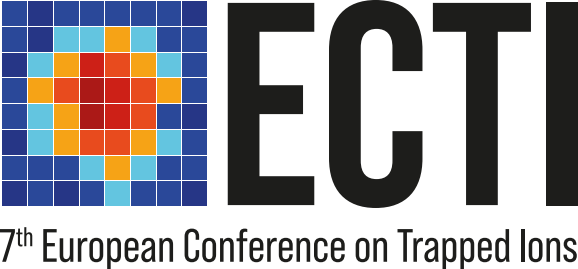Optical clocks based on mixed-species Coulomb crystals promise reductions of both statistical and systematic uncertainties beyond the state of the art.
We operate an optical clock based on the combination of In (clock) and Yb (auxiliary) ions, which we have identified as a candidate for multi-clock-ion operation with level systematic uncertainties [1,2].
Our approach uses short linear chains (~10 ions), in which the permutation of species is actively controlled to ensure efficient and reproducible sympathetic cooling conditions [3]. The systematic uncertainty is currently evaluated as for operation with a single In clock ion, which yields an instability of [4]. The clock has participated in local and international comparisons, and operation with up to four clock ions has been demonstrated.
Besides its use for sympathetic cooling, mixed-species operation also allows the reduction of systematic uncertainties. Fluorescence from the S to P cooling transition in Yb is used for excess micromotion compensation during clock operation. Uncertainties of the differential polarizability and the P factor of In can be reduced using interleaved interrogation of different transitions in the mixed-species system. These measurements can reduce the frequency uncertainty contributions due to black-body radiation and the 2nd-order Zeeman shift from their respective current values close to by more than an order of magnitude each.
[1] N. Herschbach et al., Appl. Phys. B 107, 891 (2012)
[2] J. Keller et al., PRA 99, 013405 (2019)
[3] T. Nordmann et al., in preparation
[4] H. N. Hausser et al., in preparation

